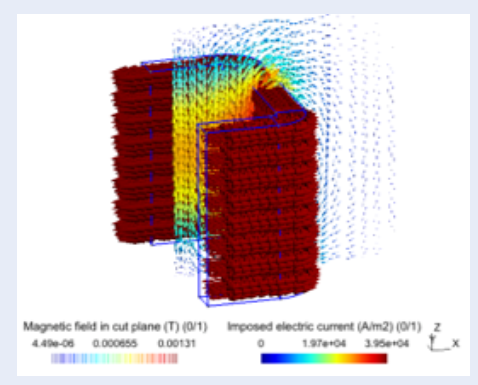
Improved error of electromagnetic shielding problems by a two-process coupling subproblem technique
- Training Center of Electrical Engineering, School of Electrical Engineering, Hanoi, University of Science and Technology
Abstract
Introduction: The direct application of the classcial finite element method for dealing with magnetodynamic problems consisting of thin regions is extremely difficult or even not possible. Many authors have been recently developed a thin shell model in order to overcome this drawback. However, this development generally neglects inaccuracies around edges and corners of thin shell, that lead to inaccuracies of the magnetic fields, eddy currents and joule power losses, specially increasing with the thickness.
Methods: In this article, we propose a two-process coupling subproblem technique for improving the errors that overcome thin shell assumptions. This technique is based on the subproblem method to couple SPs in two-processes. The first scenario is an initial problem solved with coils/stranded inductors together with thin region models. The obtained solutions are then considered as volume sources for the second scenario including actual volume improvements that scope with the thin shell assumptions. The final solution is sum up of the subproblem solutions achieved from both the scenarios. The extended method is approached for the h-conformal magnetic formulation.
Results: The obtained results of the method are checked/compared to be close to the reference solutions computed from the classcial finite element method and the measured results. This can be pointed out a very good agreement.
Conclusion: The extended method has been also successfully applied to the practical problem (TEAM workshop problem 21, model B).

